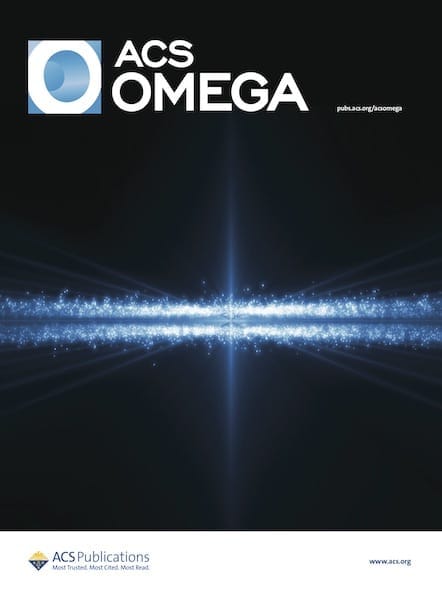Lithium-ion batteries have become widespread, but lithium metal resources are finite. Could its chemical cousins provide a more sustainable alternative? And where do the crabs come in?

Many consumer electronics rely on rechargeable lithium-ion batteries, which have high energy density and long life cycles. But there are limited lithium deposits on earth, and it has been predicted that shortages could be seen as soon as 2025. According to the U.S. Geological Survey, we are currently extracting 100,000 tons a year from total worldwide reserves of roughly 22 million tons – although not all of that will be accessible, even with advanced mining technologies.1,2 To meet demand and press forward with going electric, we need sustainable, cost-effective alternatives that can power our batteries.
It is estimated that around 1.4 million tons of crab are eaten each year. Whether you’re a fan of this protein-packed shellfish or not, the important fact here is that crustacean waste is rich in chitin as well as inorganic components such as calcium carbonate, silica, and phosphates. Chitin is a biopolymer made from repeated 2-(acetylamino)-2-deoxy-d-glucose units. Found in shellfish, insects, and fungi, it is the second most abundant natural polysaccharide (after cellulose).
Previous studies have looked into using the chitin in crab shells for a biodegradable zinc-ion battery,3 but another approach proposes transforming these bio-wastes into hard carbon, which could be used as an anode for sodium-ion batteries. Though chemically similar to lithium, sodium ions are larger and incompatible with typical graphite anodes in a standard lithium-ion battery. When hard carbon is combined with metallic semiconductor materials such as transition metal dichalcogenides (TMDs), the material can then become a feasible battery anode.

Sodium: Leading the Charge Toward Better Batteries
New research published in ACS Omega explores how two different TMDs could be combined with hard carbon made from crab shells to make a viable sodium-ion battery anode. The authors used crab shell waste as a biomass carbon precursor to synthesize low-cost tin or iron sulfide anode materials via a simple hydrothermal method. The resulting anode had excellent cycle stability and rate performance, delivering capacities of 535.4 and 479 mA h g–1 at the current density of 0.1 A g–1 for the tin and iron sulfide, respectively. When tested in a model battery, the team found that both composites could last for at least 200 charge cycles. The researchers report that this could represent an effective and economical strategy to use biomass and TMDs for high-performance sodium-ion batteries.4
It's not the first time that crab shell waste has been explored as a possible source of valuable chemicals. Traditionally, the shell was dispensed in powder form as fertilizer or animal feed, but it has also been used as a raw material in the fields of cosmetics, food, and biomedicine. Work from a team in China used a composite derived from crab sells as a solid base catalyst for converting biomass-derived glucose to fructose through isomerization—a key intermediate in transforming cellulosic biomass into biofuels and other chemicals.5
These works demonstrate that biomass resources such as crab shells are viable alternatives for our ongoing energy needs, with key advantages of being renewable, abundant, and eco-friendly.

Stay Connected
Explore Related Research from ACS Journals
Chitin-Derived Heteroatom-Doped Porous Carbon for High-Performance Room-Temperature Na-S Batteries
Xun Sun, Xiaoyang Chen, Zhe Wang, Xinping Ai, Yuliang Cao*, and Jinping Zhou*
Economical and Environmentally Friendly Track of Biowaste Recycling of Scallop Shells to Calcium Lactate
Somkiat Seesanong, Yok Wongchompoo, Banjong Boonchom*, Chuchai Sronsri, Nongnuch Laohavisuti, Kittichai Chaiseeda*, and Wimonmat Boonmee
Is There a Ready Recipe for Hard Carbon Electrode Engineering to Enhance Na-Ion Battery Performance?
Joanna Conder, Claire Villevieille, Jean-Marc Le Meins, and Camélia Matei Ghimbeu*
Chitin and Chitosan—Structurally Related Precursors of Dissimilar Hard Carbons for Na-Ion Battery
Joanna Conder, Cyril Vaulot, Cyril Marino, Claire Villevieille, and Camélia Matei Ghimbeu*
References
- World Economic Forum. https://www.weforum.org/agenda/2022/07/electric-vehicles-world-enough-lithium-resources/
- US Geological Survey. https://pubs.usgs.gov/periodicals/mcs2022/mcs2022.pdf
- Shamshina, J. L. et al. Advances in Functional Chitin Materials: A Review. ACS Sustainable Chem. Eng. 2019, 7, 7, 6444–6457.
- Chen, Y. et al. Crab Shell-Derived SnS2/C and FeS2/C Carbon Composites as Anodes for High-Performance Sodium-Ion Batteries. ACS Omega 2023, 8, 10, 9145–9153.
- Shen, F. et al. Crab Shell-Derived Lotus Rootlike Porous Carbon for High Efficiency Isomerization of Glucose to Fructose under Mild Conditions. ACS Sustainable Chem. Eng. 2019, 7, 4, 4466–4472.
